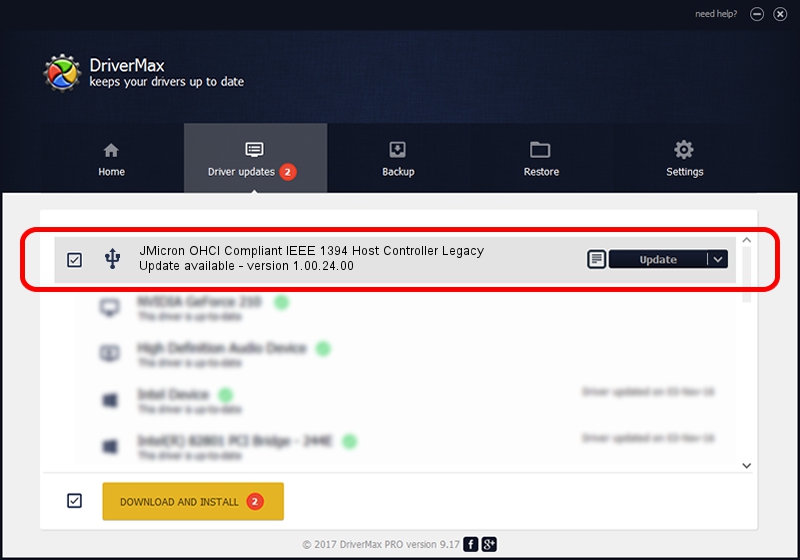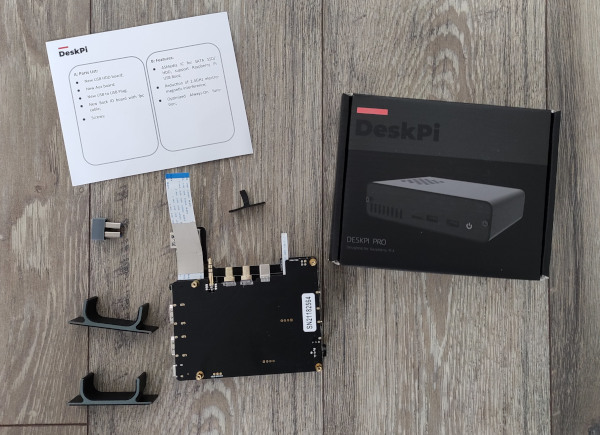| Type | Public |
|---|---|
| GTSM: 4925 | |
| Industry | Semiconductors |
| Founded | September 2001; 19 years ago |
| Headquarters | , |
Key people | Tim Liu (Chairman) Tim Liu (President) |
| Products | Integrated circuits, bridge controllers |
| Website | www.jmicron.com |
JMicron Technology Corporation (Chinese: 智微科技; pinyin: Zhìwēi Kējì) is a Taiwanesefabless technology design house based in Hsinchu, Taiwan. As a manufacturer of integrated circuits, they produce controller chips for bridge devices.[1]
Solved: After entering the serial # for my laptop on hp.com, no Windows 10 drivers are offered for the JMicron Media Card Reader. I used the one for - 6798460. All product development, malware-research & Support are right here in the United States. PC Pitstop Legacy Scan Tools. JMicron OHCI Compliant IEEE 1394 Host. When I try to mount a disk using sshfs on my Mac High Sierra v10.13 I get the pop-up message: System Extension Blocked A program tried to load new system extension(s) signed by “Benjamin Fleischer. I have just figured out the answer to this question. On a different post, I read this comment from someone 'Because of security reasons pressing the Allow button won’t take effect if you are connecting to the machine via Remote Desktop, or if the mouse/trackpad is emulated by a 3rd party application (MagicPrefs, BetterTouchTool, Synergy, etc.)'. After reading all the posts about downloading & installing the 1394 Legacy driver to fix glitches like this, I did so. The file downloaded just fine, but when I try to open the file using Windows installer, a message pops open for about a half-second that says 'Please wait while windows configures 1394 compliant controller.
History[edit]
2001-2007[edit]
The company was founded in September 2001 and its headquarters is in Hsinchu, Taiwan. The company also operates an advanced R&D center based out of Irvine, California, United States.

Legacy Developer Jmicron Blocked
In 2002, the company began development of their USB 2.0 to SATA bridge controller technology.[2]
JMicron began developing SSD technology in 2006, launching their first generation SSD controller, the JMF601A/602A, towards the end of 2007. JMicron's SSDcontroller is widely adopted by many SSD manufacturers such ASUS, Corsair,[3]OCZ, and Transcend. JMicron was one of the first[4] companies to provide an SSD controller chip to these companies, allowing them to produce reasonably priced SSDs. Unfortunately the SSD controller did not have any support for DRAM cache, and with the NAND technology available at the time this made random writes very slow (the JMF602B improved this only slightly). [2]
2008 to Present[edit]
Also in 2008, JMicron showcases a number of peripheral products. This includes the JMB353, a hi-speed USB & 1394a to SATA II external HDD controller chip; this device is the first to feature an integrated 1394a PHY chip. Also included in the showcase is the JMB38x series, a PCIe to card reader & 1394 controller chip, the JMB211, a Gigabit Ethernet PHY controller chip, the JMB352, a high-speed USB & eSATA to 2-port SATA II external HDD controller chip, and the JMB325, a 1- to 5-port SATA II port multiplier with hardware RAID.[5]
In 2009, the JMF612 was released. It saw popularity throughout 2010 in its use in a number of industry SSDs.[6] In particular, 2009 was a landmark year for JMicron, in that the company achieved the top ranking as a supplier for external HDD and SATA-PATA bridge controllers, shipping roughly 35 million and 15 million units, respectively.[2]
In October 2010, JMicron was scheduled to list on the Taiwanese Gre Tai Securities Market (GTSM).[2] Also in 2010, a Gartner tandem research report reveals JMicron to be first in interface controller chip market share.[7] In 2010 stolen private keys certificates were used for digitally sign rootkit drivers in Stuxnet virus.[8][9]
After developing its own physical layer and high speed technology over the preceding years because of flat growth in the long term, JMicron diversifies from the base notebook and motherboard controller business. 2011 is characterized by JMicron winning orders from Western Digital and Samsung Electronics for JMicron's USB 3.0 HDD controller, with net sales projected to grow 10%.[10]
In late 2011, the JMF661 was released as a third generation JMicron SSD controller, and it was shown to be an effective entry-level product. Shortly thereafter, in 2013, the JMF667 series was released as a 256 GB capacity, 512 MB DDR3 external cache SSD controller.[11] Analysis in 2013 reveals that SSD controller technology and high-speed transmission interface IC accounts for 29% and 67% of JMicron's sales, respectively.[2]
In June 2014, JMicron announced the JMF670 and JMF670H. Both are 4-channel SATA SSD controllers capable of supporting up to 512 GB of storage capacity. Production was to begin in July 2014. In the same announcement, they showcased the JMF810, a PCIe Gen II 2-lane controller, and the JMF811, a PCIe Gen II 4-lane SSD controller. These controllers are designed for speeds of up to 1.5 GB/s in sequential read and 1.2 GB/s in sequential write. Another announcement was the JMS577, which is a USB 3.0 to SATA VI Gb/s bridge controller. The company also showcased their USB 3.1 technology, which is expected to achieve data transmission speeds of 10 Gbit/s—doubling the speed of the previous USB Gen III controller.[12] Among these announcements included a single-chip, dual-port SATA III RAID/CLONE program within the JMS561/562/561U product line.[7]
Throughout 2014, JMicron's JMF667H was reviewed by a number of online review sites like Tom's Hardware, AnandTech, and TweakTown.
In June 2016, JMicron spun off its SSD division to Maxiotek Corporation, a Taiwan-based company designs and markets SSD controller products. Meanwhile, JMicron released the JMS576, its first USB-CUSB 3.1 Gen 1 to SATA 6Gbit/s bridge controller.
Products[edit]
Legacy Developer Jmicronとは
USB Bridge controller[edit]
USB-multi-interfaces
Legacy Developer:jmicron Blocked
- JMS581: USB3.2 Gen2x1 to SD7.x / PCIe / SATA

Legacy Developer Jmicron
USB-UFS[13]
- JMS901: USB 3.2 Gen1 to UFS 2.1/ UHS-1
USB-SATA[14]
- JMS591: USB3.2 Gen2x2 to 5x SATA 6Gb/s (RAID 0/1/5/10/JBOD)
- JMS580: USB 3.2 Gen2 to SATA 6Gb/s
- JMS578: USB 3.0 to SATA 6Gb/s
- JMS576: USB 3.2 Gen1 to SATA 6Gb/s
- JMS562: USB 3.0 & eSATA 6Gb/s to Dual SATA 6Gb/s (RAID 0/1/JBOD)
- JMS561U: USB 3.0 to Dual SATA 6Gb/s (CLONE)
- JMS561: USB 3.0 to Dual SATA 6Gb/s (RAID 0/1/JBOD)
- JM20337: USB 2.0 to SATA/PATA
- JM20329: USB 2.0 to SATA
USB-PCIe[15]
- JMS586: USB 3.2 Gen2x2 to PCIe/NVMe Gen3x4
- JMS583: USB 3.2 Gen2 to PCIe/NVMe Gen3x2
PCIe Bridge Controller[edit]
PCIe-PATA (IDE)
- JMB361: PCIe 1.0a x1 to 1x Serial ATA II and 1x PATA UDMA/100 channel[16]
- JMB363: PCIe 1.0a x1 to 2x Serial ATA II and 1x PATA UDMA/100 channel[17]
- JMB368: PCIe 1.0a x1 to 1x PATA UDMA/100 channel[18]
PCIe-SATA[19]
- JMB585: PCIe Gen3x2 to 5x SATA 6Gb/s
- JMB582: PCIe Gen3x1 to 2x SATA 6Gb/s
M.2 controller[edit]
- JMF670H: NAND flash controller for M.2 SSD
SATA Bridge Controller[edit]
SATA-SATA[20]
- JMB575: 1 to 5-port SATA 6Gb/s Port Multiplier or 5 to 1-port SATA 6Gb/s Port Selector
- JMB572: 1 to 2-port SATA 6Gb/s Port Multiplier or 2 to 1-port SATA 6Gb/s Port Selector
- JMB394: 1 to 5-port SATA 3Gb/s Port Multiplier (RAID 0/1/5/10/JBOD / CLONE with LCM interfaces)
- JMB393: 1 to 5-port SATA 3Gb/s Port Multiplier (RAID 0/1/5/10/JBOD/CLONE)
- JMB391: 1 to 5-ports SATA 3Gb/s Port Multiplier (RAID 0/1/10/JBOD)
- JMB390: 1 to 2-port SATA 3Gb/s Port Multiplier (RAID 0/1/JBOD)
SATA-PATA[21]

- JMD330: SATA to PATA
- JMH330/S: PATA to SATA
Market Reception[edit]
When flash controllers were first offered to SSD manufacturers in 2008, JMicron's early JMF601 and JMF602 models were reported to have issues with write latency, causing a stuttering problem.[22][23] The performance problem was attributed to the small buffer size used in the controller.[24] After several corrective releases, JMicron released the JMF667H, which to date has received generally positive reviews, being cited as both competitive and budget-friendly[25] when used with the correct type of NAND.[26] For instance, when paired with Toshiba's A19 NAND, the JMF667H has been shown to be capable of achieving the following metrics: 500 MB/s for 128 KB sequential read, 450 MB/s for 128 KB sequential write, and reaching 80,000 4 KB IOPS for both random read and write.[27] The JMF667H has also been found to have very low power consumption, with active idle power consumption in the 0.2-0.4 W range depending on the capacity of the controller, as well as an average power consumption rating of 0.36-0.78 W when examined in PCMark 7.[27] Certain drives driven by the JMF667H controller, such as the Kingfast C-Drive F8, have achieved high scores on independent review sites—for example, 90% on TweakTown.[28]
See also[edit]
References[edit]
- ^JMicron's solution/product list
- ^ abcdJMicron Technology Corp
- ^http://www.hardwaresecrets.com/news/4585
- ^JMicron SSD Testing With A19, L85A & L85C Memory
- ^'JMicron new series of high-speed interface solutions will be coming Computex'. Archived from the original on 2016-03-03. Retrieved 2015-01-16.
- ^JMicron JMF612 Solid State Drive Processor
- ^ abJMicron Technology showcase a variety of storage controller chip in International Computer Show
- ^Aleksandr Matrosov; Eugene Rodionov; David Harley & Juraj Malcho. 'Stuxnet Under the Microscope'(PDF). Archived from the original(PDF) on 11 October 2011. Retrieved 24 September 2010.CS1 maint: discouraged parameter (link)
- ^Kim Zetter (23 September 2010). 'Blockbuster Worm Aimed for Infrastructure, But No Proof Iran Nukes Were Target'. Wired. Retrieved 4 November 2016.
- ^[1]
- ^当今SSD主控里的非主流,JMicron历代主控回顾
- ^JMicron introduces at Computex Taipei 2014 a series of PCIe and SATA SSD Controllers, new features for the USB 3.0 Storage Products, and the USB3.1 Storage Controller Solutions
- ^Products_USB to UFS
- ^Products_USB to SATA
- ^Products_USB to PCIe
- ^JMB361 datasheet
- ^JMB363 datasheet
- ^JMB368 datasheet
- ^Products_PCIe to SATA
- ^Products_SATA to SATA
- ^Products_STAT to PATA
- ^'OCZ Once Again Slashes the Price of Core Series SSDs'. Archived from the original on 2014-10-06. Retrieved 2008-12-10.
- ^G.Skill, Intel & Patriot SSD group test
- ^Avoid SSDs with Jmicron's JMF602 Controller
- ^Tweaktown: JMicron JMF667H Firmware Preview Testing with L85A, L85C and A19 Flash by Chris Ramseyer
- ^JMicron JMF667H Reference Design (128GB & 256GB) Review by Kristian Vättö
- ^ abJMicron Returns: The JMF667H Controller On Four Reference SSDs by Christopher Ryan
- ^Kingfast C-Drive F8 Series 240GB SSD Review - Cheapest tested 240GB drive so far - Final Thoughts
External links[edit]
Depending on your device, follow the steps to download and install Norton.
The Norton product that is included with your LifeLock membership is not compatible with iOS devices.
Sign in to your account.
Type in your user name and password, and click Sign In.
Under Norton Security Online, click Protect This Device or Download to install Norton on your current device.
Click on View product features and your PIN and make a note of your PIN as it may be needed during the installation.
Click Agree & Download.
Run the downloaded file.
Follow the online instructions to complete installation and activation.
Sign in to your account on your Android device.
Type in your user name and password, and click Sign In.
Under Norton Security Online, tap Protect This Device or Download to install it on your current device.
Tap Download Now.
In the Google Playstore page, tap Install.
After the installation completes, tap Open.
Agree to the Norton License agreement and Terms of Use and tap Continue.
The Norton product installation and activation is now complete.